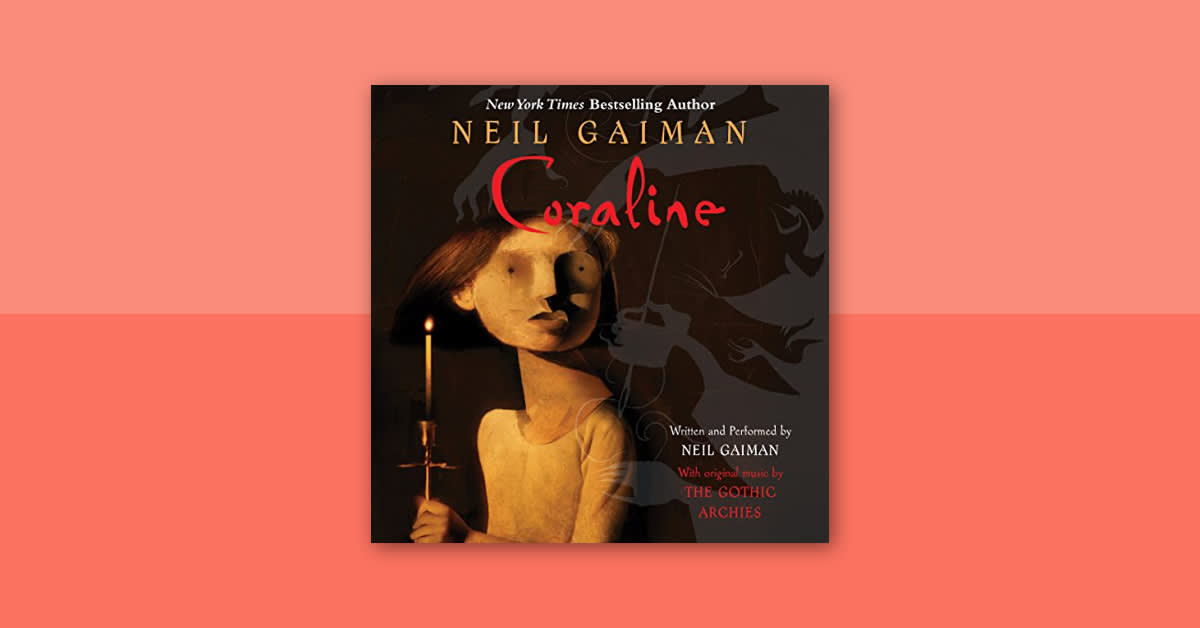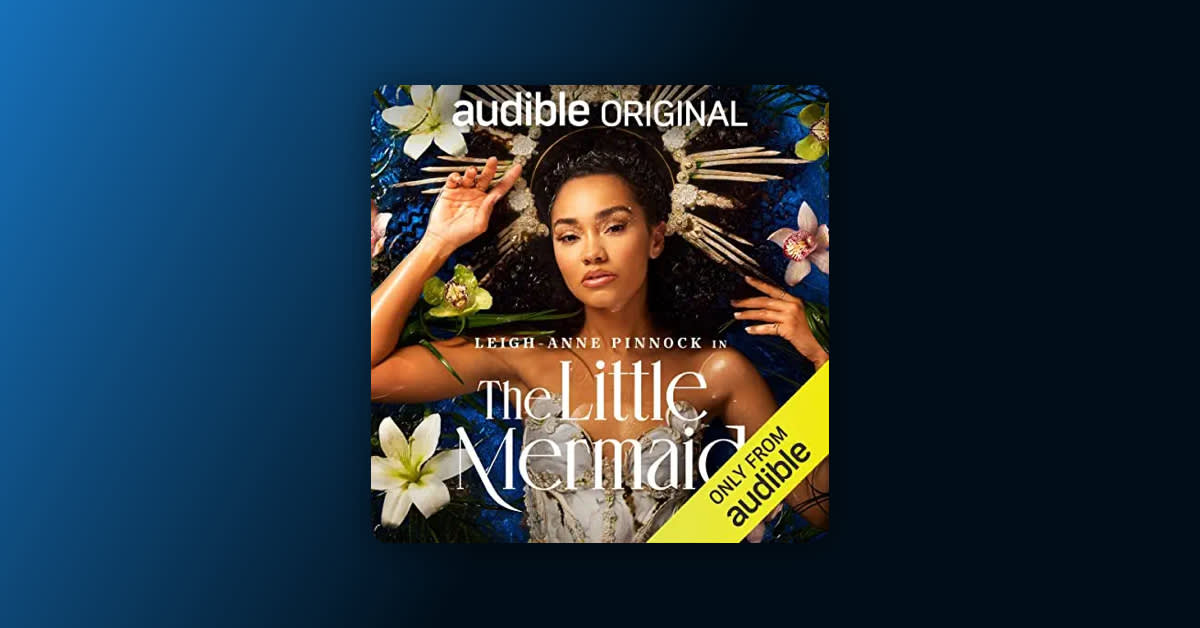For nearly two decades, Coraline has delighted and terrified fans, inspiring both a film and graphic novel adaptation. It is the story of Coraline, a young girl who moves to an old house that has been divided up strangely into four flats. The only child of workaholic parents, who always seem to be brushing her off in favor of more important business, Coraline is lonely. When she discovers a portal that takes her to another flat where an Other Mother has all the time in the world for her, Coraline is happy—until things take a dark turn.
From the brilliant mind of prolific, best-selling author Neil Gaiman, Coraline is considered a modern dark fantasy classic for younger listeners. Published in 2002, it received critical acclaim, winning both the Hugo Award and the Nebula Award for Best Novella as well as the Bram Stoker Award for Best Novel for Young Readers. With its grounded premise and clever use of the uncanny, Coraline continues to haunt listeners of all ages. When Gaiman began writing the story in 1990, Coraline was initially a typo of the name he had intended to call his curious young heroine: Caroline. But Gaiman liked the looks of it and felt the character take shape, so he kept Coraline.
What is Coraline about?
The story begins with Coraline and her family moving into the old house. While exploring her new flat, she discovers a small door that, when opened, is bricked up. Coraline is bored and, when she's ignored by her parents, she decides to get to know her new neighbors. She first visits Miss Spink and Miss Forcible, elderly ladies who retired from the stage. They welcome Coraline in and serve her tea—but when they read her tea leaves, they warn her of danger. Then, Coraline visits Mr. Bobo, referred to as "the crazy old man upstairs." He's attempting to train mice for a circus, and he tells Coraline that his mice warn her to not go through the door. But she doesn't listen.
Back in her flat, Coraline opens the mysterious door again. This time, it leads to a flat that's identical to her own. So, she steps inside. There, she finds an Other Mother and Other Father, who look like her own parents—except taller and thinner, with buttons for eyes. They welcome Coraline, make food she likes, and pay attention to her. Coraline also finds that her toys are more interesting and the neighbors are more entertaining here. Everything seems perfect, until she comes across a black cat, a stray in her own world, who warns her of the danger in this other world.
Soon, the Other Mother offers Coraline the chance to stay with her forever, on one condition: Coraline must have buttons sewn over her own eyes. Horrified, Coraline flees through the door back to her own flat—only to find her parents missing. Frantically searching, she can't find them anywhere. Suddenly, she discovers them—trapped in a mirror. Coraline can only assume that the Other Mother has kidnapped them. So, she bravely heads back to the other world to confront the Other Mother.
There, the black cat tells Coraline to be careful: the Other Mother is very good at playing games and very mad that Coraline ran away. The Other Mother punishes Coraline for fleeing by locking her in a closet. In that small dark space, Coraline meets the ghosts of three other children who fell under Other Mother's spell, who warn her not to let Other Mother claim her.
When the Other Mother releases her from the closet, Coraline proposes a game. If she can find where her parents are being kept and the souls of the three ghost children, then the Other Mother will set them all free. If she fails, however, Coraline will stay and allow buttons to be sewn over her eyes. Other Mother agrees.
Using a magical stone from Miss Spink, Coraline finds the three lost souls. But the black cat warns Coraline: even if she wins, the Other Mother will still try and trap her there. After she has discovered the other children's souls, Coraline confronts the Other Mother, claiming that her parents are being kept in the passage between their worlds. However, Coraline knows they're really kept in a snow globe on the mantle. Other Mother thinks she has won and starts to prove that Coraline is wrong. Moving quickly, Coraline throws the cat at Other Mother, grabs the snow globe, and runs through the passage. The Other Mother attempts to come after her, but her hand gets closed in the door. Since Coraline has the key, she feels safe back in her own world. The black cat also escapes with Coraline.
Her parents wake and have no memory of being gone. Coraline has a dream of the three children she saved. They seem to have been freed from that horrible closet—but they warn that the Other Mother will not stop at anything until she gets the key and comes after Coraline. Coraline knows that she must keep the key from the Other Mother, no matter what. She prepares a picnic and heads outside, knowing that the Other Mother's hand is following her. She drapes the picnic blanket over the well, and waits while the hand scuttles up and attempts to take the key. Once on the blanket, the hand falls down on the open well below. Coraline returns home to her flat and her parents, satisfied that the Other Mother is unable to get her now.
How does the film adaptation of Coraline compare to the book?
The stop-motion animated version of Coraline closely follows the book, with a few notable differences. It's set in Oregon rather than the UK, and Coraline has bright blue hair. She also makes a friend in her new neighbor Wybie, the landlady's grandson. He gives Coraline a rag doll with button eyes that he found in his grandmother's apartment. The doll resembles Coraline—an ominous hint at what's to come. In the movie, a mouse leads Coraline to the door in the wall, which opens into the other world. Coraline enjoys her visit there and doesn't think anything is the matter at first. But when she returns home, Wybie reveals that his great-aunt disappeared when she was young. In the movie, Coraline visits the other world three times before the Other Mother offers to have her stay forever. When Coraline refuses, she is immediately imprisoned in the closet. One of the other children inside that closet is Wybie's great-aunt, who tells Coraline that the rag dolls are how the Other Mother spies on children in the real world. Other Wybie helps Coraline escape, but not before she promises to find the other children's eyes, which appear as marbles.
The rest of the movie similarly follows Coraline's mission, and she has a confrontation with the Other Mother that is similar to the book. The Other Mother turns into a monstrous arachnid creature when she claims Coraline has lost, but Coraline again escapes in a similar matter, with the help of the cat. Once home, Coraline is similarly warned that the Other Mother will come for the key, so she decides to drop it down a well. She is attacked while trying to do so, and Wybie comes to her rescue. He crushes the hand with a rock, and they throw it down the well.
Overall, the movie, which was nominated for an Academy Award. has the same creepy elements that make the book so eerie and memorable. And the audiobook, narrated by Neil Gaiman himself, is an exquisite production that shines in its own right. It’s a must-listen for all Coraline fans, or anyone looking for a spooky tale to captivate kids and adults alike.





